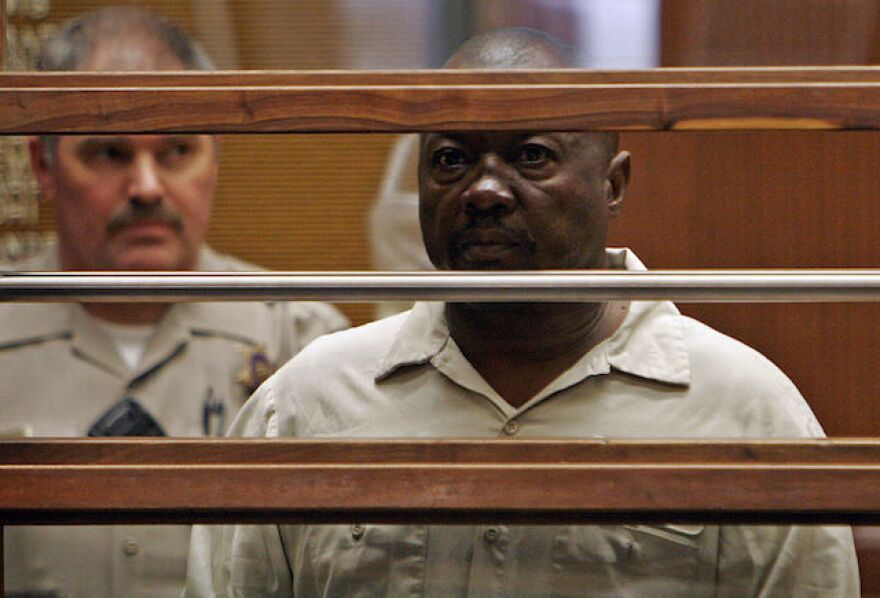This story is free to read because readers choose to support LAist. If you find value in independent local reporting, make a donation to power our newsroom today.
This is an archival story that predates current editorial management.
This archival content was written, edited, and published prior to LAist's acquisition by its current owner, Southern California Public Radio ("SCPR"). Content, such as language choice and subject matter, in archival articles therefore may not align with SCPR's current editorial standards. To learn more about those standards and why we make this distinction, please click here.
The Grim Sleeper Never Took A Break From Killing, Investigators Say

Investigators believe that serial killer Lonnie Franklin, Jr. perhaps better known as The Grim Sleeper, had additional victims and never 'slept' at all. Lonnie Franklin, Jr. was convicted on Thursday of 10 murders. It's often been said that Franklin murdered at least 7 women between 1985 and 1988, then stopped killing for over a decade before starting up again in 2002. His last known killing took place in 2007, and he was arrested in 2010. When investigators searched his home, they found items from his victims that he had kept, as well as over 1,000 photographs he'd taken of numerous women.
Because of the Franklin's supposed period of inactivity, L.A. Weekly's Christine Pelisek dubbed him "The Grim Sleeper." However, investigators believe Franklin was never 'asleep.' In fact, they believe he killed 11 people during this time, the L.A. Times reports, and likely had at least 25 victims. Prosecutors will discuss five of these possible victims this week during the penalty phase, during which jurors will decide whether Franklin should be sentenced to death or life in prison.
The five victims were connected to Franklin after he had been charged with the other murders, and prosecutors said that adding those charges would have further delayed the proceedings without increasing punishment.
Like Franklin's other victims, the five additional victims were all black women living around South L.A. Inez Warren, 28, was shot once in the chest. Her body was found in Gramercy Park, in an alleyway. Sharon Dismuke, 21, was found in a gas station, also shot in the chest. Ayellah Marshall, 18, and Rolenia Morris, 31, disappeared in 2006 and 2005, respectively, and neither have ever been found. However, a photo of Morris and her driver's license as well as Marshall's student ID were found among Franklin's belongings.
Georgia Mae Thomas, 43, had dated Franklin. Her sister, Vivian Williams, told police that she had dropped her sister off to see him several times and recognized his house on the news when he was arrested. Her sister was murdered in 2000, found in an industrial yard with two gunshot wounds to the chest. Investigators found Franklin's DNA on her body and matched the gun used to kill her to one found in Franklin's house.
Franklin did not testify at his trial, and his lawyer, Seymour Amster, tried to claim that Franklin's unidentified nephew was the possible killer. "Each and every murder in this case could have been done by a mystery man with a mystery gun with mystery DNA," Amster said in his closing statements. The jury didn't buy it, spending less than a day and a half deliberating before convicting Franklin.
Related: HBO's 'Grim Sleeper' Director Says Killings Were A Symptom Of A 'Racially Divided City'







